Aimsun provides two different approaches for analysing vehicle paths:
- Check all vehicle paths by looking at vehicle trajectories (in dynamic simulations)
- View the same information but aggregated for all vehicles (for static and dynamic traffic assignments)
Vehicle trajectories
Aimsun can store vehicle trajectories in both the microscopic and the mesoscopic engines. They are stored in the project database with table names: MEVEHTRAJECTORY, MEVEHSECTTRAJECTORY (meso) and MIVEHTRAJECTORY, MIVEHSECTTRAJECTORY, MIVEHDETAILEDTRAJECTORY (micro).
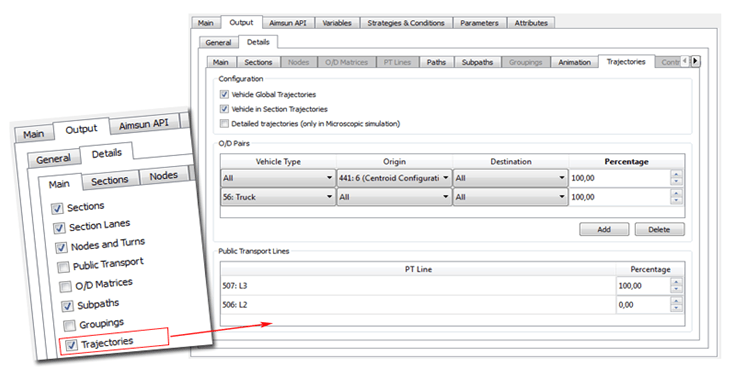
Click to enlarge: Definition of the trajectories information to store in the database
Vehicle trajectories can produce a huge amount of information so before storing you need to filter by:
- Origin or destination centroid
- Vehicle type
- Public line (for public transport)
Aggregated path information
Aggregated vehicle path information is stored in APA files with the path assignment results stored as:
- All paths used, using the shortest path trees
- Path utilisation or percentage of utilisation for each vehicle type and interval. This can be analysed in the Path Assignment Editor located in the Replication, Results or Macro Assignment Experiment Editor.
- Path statistics: information for each interval regarding the number of vehicles using that path, travel times etc (for dynamic traffic assignments only). This can be analysed in the Path Statistics Editor located in the Replication or Results Editor.
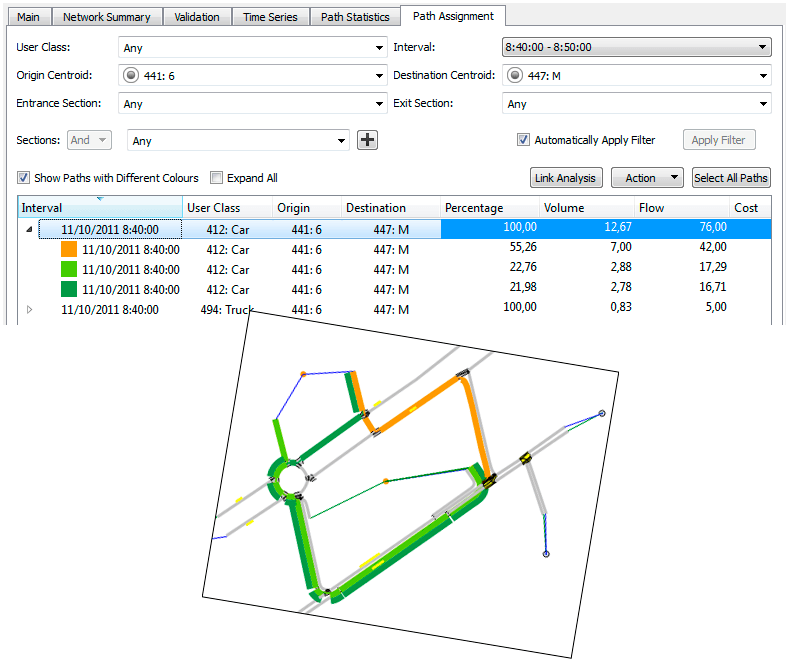
Click to enlarge: Path assignment dialog
The above Path Assignment dialog shows the theoretical path usage. The percentage is calculated using the corresponding discrete choice function defined in the experiment for dynamic simulations. For static assignment, the usage percentage depends on the algorithm chosen; at each static iteration flows are redistributed from one path to another, searching for an equilibrium.

Click to enlarge: Path statistics information
The simulated path usage is represented in Path Statistics. For example, in the interval from 8:40 to 8:50, vehicles follow the red and orange paths. During the 10-minute interval, 9 vehicles have been assigned to the red path and 1 vehicle is waiting in the virtual queue to enter because only 8 vehicles can enter the network. Mean path travel time (red path) for all vehicles that enter the network during this interval (8 vehicles) is 76.6 seconds and the mean path travel time (red path) for all vehicles that exit the network during this interval (7 vehicles) is 74.11 seconds.
The theoretical path usage can be used as an input for another replication or result. In both cases this is done by defining the APA file in the Scenario Editor.
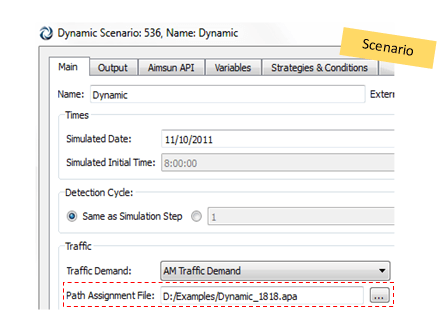
Definition of input path assignment file in a dynamic scenario
Depending on the assignment approach, once the input APA file is defined there are various options:
1. One-shot simulation
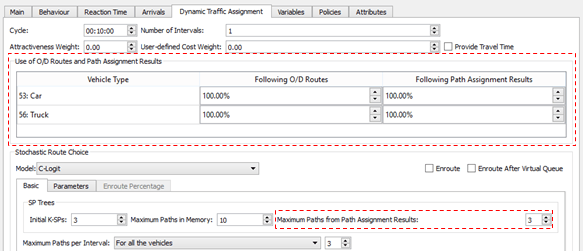
Click to enlarge: One-shot simulation
The percentage of vehicles using the paths from the APA file is defined in the Following Path Assignment Results column. Here the value ‘100.00%’ shows that all vehicles are using the paths from the APA file.
2. Dynamic User Equilibrium
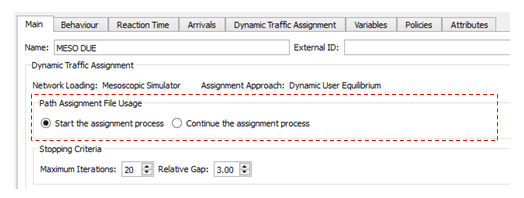
Click to enlarge: Dynamic User Equilibrium
In a DUE there are two options: Start or Continue. The Start option is used to improve convergence by using a set of good initial paths. Normally these paths come from a static assignment or the same DUE with a percentage of the demand. The Continue option can be used to improve a previous run (that is, improving the Rgap) or it can be used to run a new DUE (i.e. future) with some slight differences in the demand or supply but with the aim of not having a completely new equilibrium in the network.









